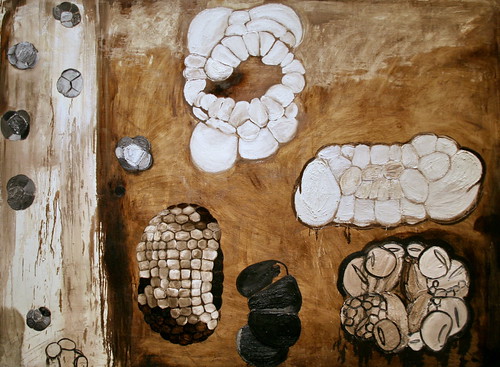Solow Building
Image by lawrence's lenses
The Solow Building, located at 9 West 57th Street, is a skyscraper located in Manhattan just west of 5th Avenue, sandwiched between the 57th and 58th Street. It is located next to such prominent buildings as the Bergdorf Goodman department store and the Plaza Hotel. Consisting of 50 stories and 689 ft. (210 m), the building's only competitor by height is the GM Building, located one block north and east. Floors above the 23rd floor offer a virtually unobstructed view of northern Manhattan and a complete view of Central Park.
The Solow Building features some of the most expensive rents in Manhattan. The Solow Building Company occupies a permanent lease of the top floor of the skyscraper. The largest tenant is Banc of America Securities, which occupies several stories and the trading floor area on floors 2 and 3. At least some of this space is expected to become available after the opening of Bank of America Tower in 2008.
Other well-known tenants include the private equity firms Kohlberg Kravis Roberts & Co., Apollo Management and Silver Lake Partners. Several hedge funds and law firms occupy a majority of the remainder the space, including Och-Ziff Capital Management, one of the largest hedge funds in the world, and Highbridge Capital Management. Chanel's corporate offices are also located in the building.
[edit] Amenities
The building features an underground parking garage, currently available retail space on the north side bordering 58th Street, an underground restaurant occupied by the 8½ restaurant, a 2 floor trading floor on floors 2-3, a newsstand in the lobby, and 24 high-speed elevators subdivided into sets of floors.
[edit] In Popular Culture
The large red sculpture of the digit 9 in front of the building was included in the project as a response to the complaints that the building's sloping reflecting walls revealed unappealing sides of the neighboring historic buildings that were previously obscured. The brightly colored sculpture was to distract the eyes of passersby from noticing these walls. This famous New York sculpture was designed by graphic artist Ivan Chermayeff.
The restaurant 8½ was featured on the show Sex and the City. This is also the building in which Chandler Bing is supposed to work in the sitcom Friends.
Namesake of the Nine West shoe store chain.
Featured in Superman.
Featured in the film Zoolander with a giant computer generated M, which served as Mugatu's fashion headquarters.
Bitumen
Image by cliff1066™
Bitumen, 1986, oil on linen by Terry Winters
One of the leading artists of the post- Jasper Johns/Robert Rauschenberg generation, Terry Winters wields his brush with the kind of knowledge and conviction that make periodic talk of "the death of painting" seem empty. Bitumen, 1986, is a work from the first decade of his career, when Winters was exploring such basic natural processes as crystal formation, fungal growth, and (as in this canvas) cellular division—and when he was equally immersed in the natural history of painting itself.
Winters' training at New York City's High School of Art and Design and later at Pratt Institute left him curious about his medium, and he began grinding and making his own paints. Attracted to bitumen, a dark-colored paint made from coal tar, but aware that its use was responsible for the poor condition of many nineteenth-century paintings that exhibit blistering surfaces over time, he obtained a stable, modified version from the French firm of Lefranc & Bourgeois for use in this painting. On full display here is what Winters calls the "transparency and viscosity" of bitumen, which he extended with umbers and other earth colors. Thick, juicy modeling alternates with passages of almost aqueous translucency. The material itself seems to partake of the painting's theme of organic growth, which is appropriate given the carbon base of the titular pigment. The tabular array of the composition, on the other hand, with its forms laid out like specimens on a table, references the rational ordering schemes employed by naturalists as well as the splayed compositions of Johns and the later works of Philip Guston. Thus the painting proposes a meeting of nature and culture that is at the heart of Winters' work.
Since 1990 Winters has turned his gaze from organic motifs to the digital presentation of graphic information, appropriating and overlaying imagery to drive his interrelated practices of painting, drawing, and printmaking. In this respect he was one of the first painters to embrace cyberspace and postmodern information theory. Winters has held fast to traditional artistic media as the appropriate vehicle for these explorations, thus extending the viability and the possibilities of painting.
Bitumen is the first work by this innovative artist to enter the Gallery's collection. Its acquisition was made possible by a generous gift from the Richard S. Zeisler Fund. The addition of this early, but classic, Winters work will help the National Gallery tell the story of painting in the 1980s, when artists such as Johns, Anselm Kiefer, Brice Marden, and others proved the continuing vitality of expressive abstract painting.
No comments:
Post a Comment